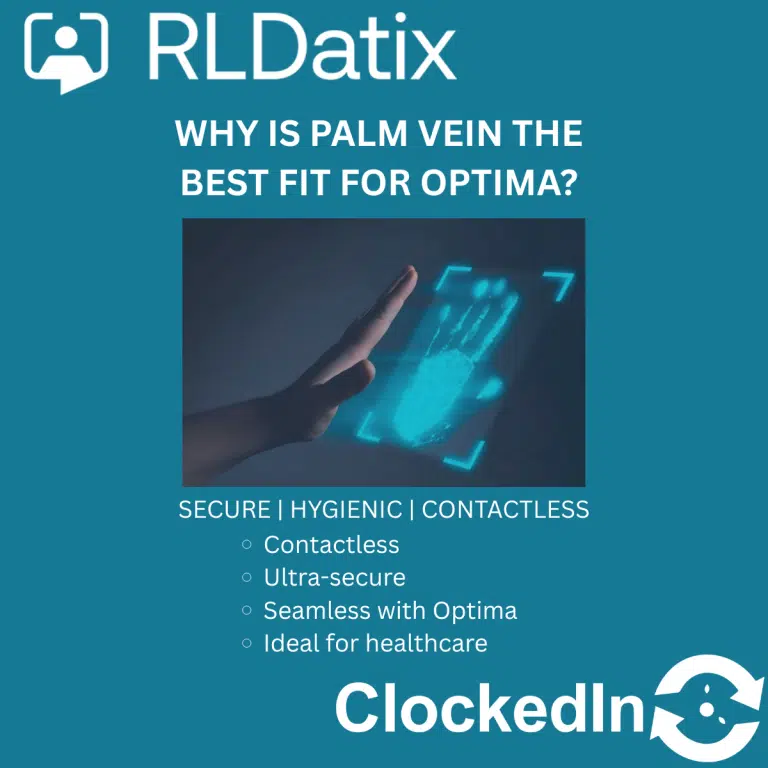When managing time and attendance through RLDatix Optima, the hardware you choose plays a vital role. From NHS Trusts to private care providers, having a secure, hygienic, and accurate method for workforce authentication ensures your data stays compliant and your teams clock in and out without issues.
Optima supports multiple hardware types — including Palm Vein, Fingerprint, RFID Fobs, and PIN pads — giving you flexibility depending on your environment. But one option is emerging as the clear leader: Palm Vein Recognition.
Let’s explore the pros and cons of each, and why Palm Vein is fast becoming the preferred solution.
Palm Vein Recognition: Contactless, Secure, Future-Proof
Palm Vein technology uses near-infrared light to scan the unique vein patterns inside a person’s hand — patterns that are invisible, internal, and nearly impossible to forge.
Why organisations choose Palm Vein:
Fully contactless and hygienic – Perfect for clinical and healthcare settings.
Exceptionally accurate – Internal biometrics reduce false positives.
Fast and consistent – Quick scans and reliable performance across environments.
Ready for tomorrow – Supports digital transformation and high-security needs.
Palm Vein readers integrate directly with Optima, allowing staff to clock in with just a wave of the hand. No physical contact, no PINs, no risk of lost fobs — just seamless, secure authentication.
Fingerprint Scanners: Familiar but Touch-Based
Fingerprint biometrics have long been used in time and attendance systems. They remain a practical choice in environments where contact isn’t an issue.
Pros:
Easy to deploy and cost-effective.
Familiar for most users.
Suitable for small to mid-size teams.
Limitations:
Contact-based — not ideal for high-traffic or sterile environments.
Accuracy can suffer with gloves, dirt, or moisture.
🪪 RFID Fobs: Quick but Less Secure
RFID fobs allow users to tap and go — no biometrics required. They’re often used where speed and ease-of-use are key.
Pros:
Minimal training required.
Ideal for shared access areas.
Fast setup and deployment.
Limitations:
Fobs can be easily lost or shared.
No personal identity verification — a weaker audit trail.
🔢 PIN Entry: Low-Cost but High Risk
PIN entry remains the most basic and affordable method — but also the least secure.
Pros:
No accessories needed.
Simple to implement for small teams.
Limitations:
Easy to forget or share PINs.
No true biometric identification.
Weak audit reliability for compliance.
Why Palm Vein is the Best Fit for Optima
While every method has its use case, Palm Vein recognition stands out for its:
✅ Superior security
✅ Zero-contact hygiene
✅ High-speed performance
✅ Seamless Optima integration
It’s the future of workforce authentication — especially in healthcare and regulated environments where compliance and cleanliness matter.
Ready to upgrade?
Cube Purple can help you integrate Palm Vein hardware with Optima for a smarter, faster, and more secure workforce solution.
Visit 👉 clockedin.uk to learn more
🔗 Learn more about RLD Optima – Time and Attendance, Simplified for Healthcare:

